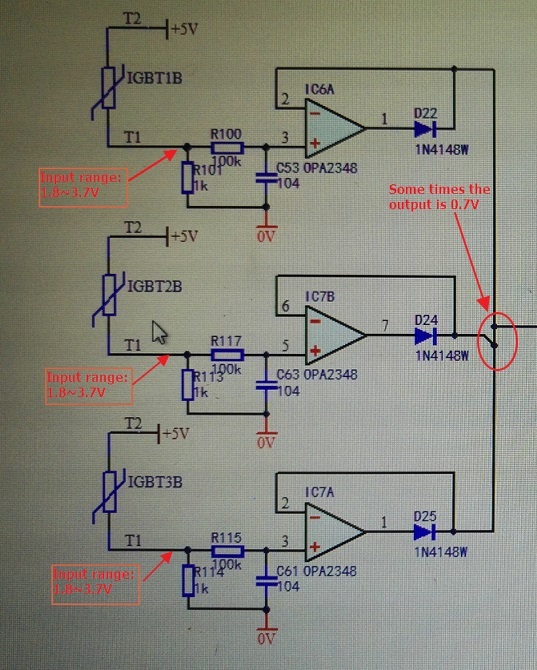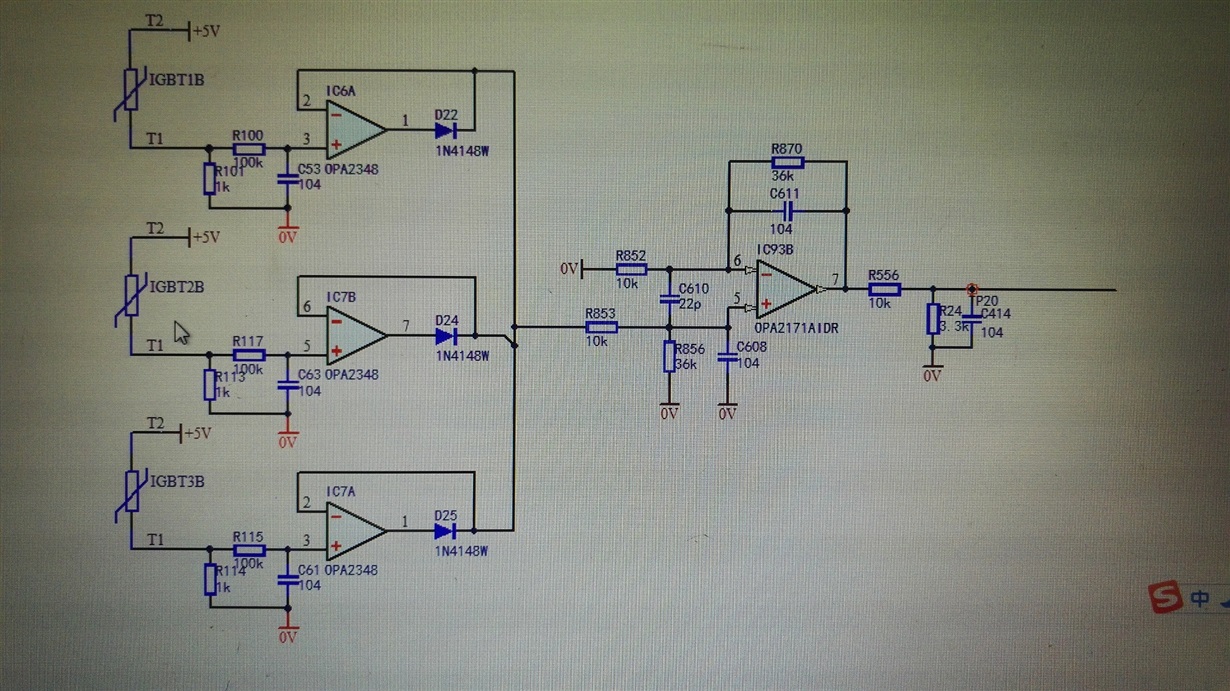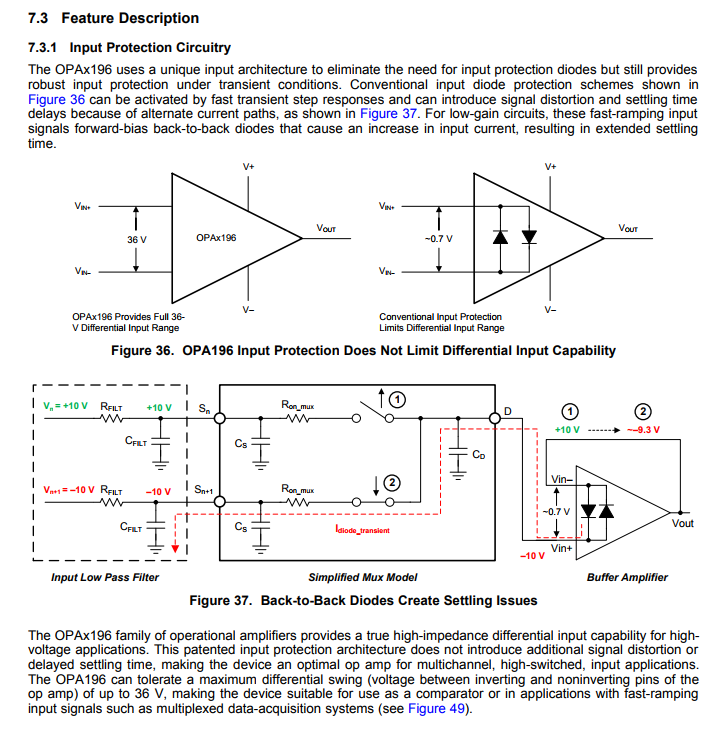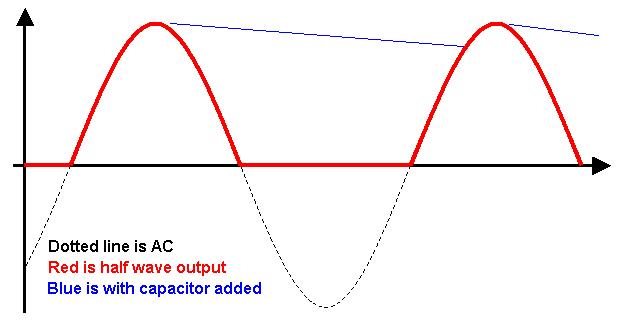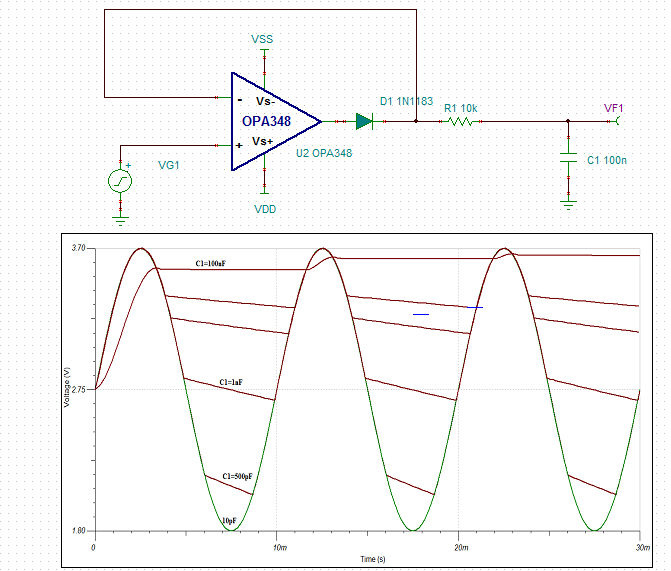Other Parts Discussed in Thread: OPA2171, OPA2196, OPA2191, OPA2349, OPA348
Dears,
My customer using OPA2348 to monitor the NTC sensor which is integrated on IGBT module. the input voltage of IN+ is range from1.8V~3.7V. the VCC of OPA2348 is +5V.
Normally, the IN- (connect to Output via a IN4148) will follow the inputs, but sometimes the IN-(connect to Output via a IN4148) is 0.7V. It may happen when testing for days, sometimes is 10 days.
is there any risk of using the below schematic? thanks!


